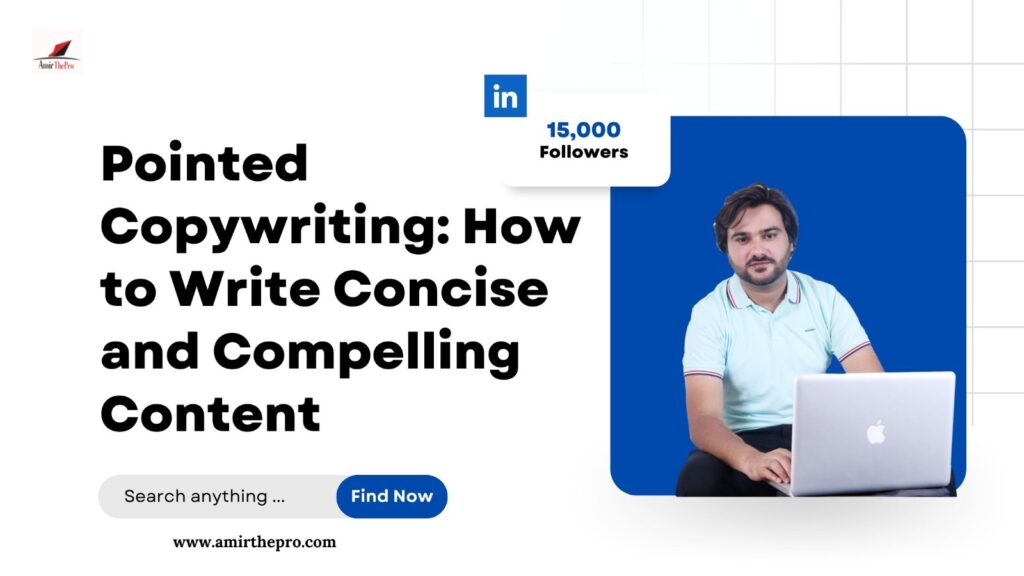Pointed copywriting is an effective way to deliver clear, concise, and impactful content. It’s a versatile skill that can be used across digital, print, and multimedia formats to drive engagement.
Pointed copywriting uses storytelling to create powerful, resonating narratives that leave lasting impressions and build emotional connections with the audience. It also uses descriptive language to immerse the reader in the experience and evoke their senses.
1. Add Headings
Headings are a crucial part of your content that helps users navigate, scan, and understand your web pages. They’re a similar experience to the table of contents found in books, articles, and research papers – they make it easy to identify which page or section of your content to go next.
Writing effective headings requires careful thought. They should be short, attention-grabbing, and accurately describe the content that follows. Headings that aren’t relevant can confuse your audience and cause them to lose interest in your content.
While you should include keywords in your headings to help them rank higher in search engines, don’t stuff your headers with words that aren’t needed. Instead, use them to highlight key points or themes in your content.
In addition to your main headings, you can also add subheadings to break up your content into sections. A subheading is a small description of the topic that appears below your main heading, and it helps readers understand which section they are reading. Subheadings can be used to provide additional context, explain complex topics, or highlight important information that needs to be emphasized. They can also serve as an anchor for your content, providing structure and consistency. For example, if you are adding a video to your article, consider adding a heading before it that explains what is included in the video.
2. Make Your Points Clear
A key to writing compelling copy is to make your points clear. This can be done by using simple language and avoiding redundant words. It can also be done by clearly defining your opinion on an issue and giving readers a reason to support or oppose it. Lastly, it can be done by creating images and analogies that help put concepts into perspective. By making your point clear, you can ensure that your audience is engaged and understanding your content.
One of the most common and boring mistakes that writers can make is to try to write for everyone. This is often seen in the use of weasel words, which are words that give the impression that you have a firm stance but, when put under pressure, reveal themselves to be hollow.
3. Make Your Content Concise
A lengthy piece of content can make readers feel overwhelmed, confused, or bored. It can also cause readers to lose interest and leave your website. Using concise writing is the best way to grab and hold the reader’s attention and communicate your message clearly.
Wordy writing is often filled with fluff. Fluff is filler text that adds nothing to the overall meaning or purpose of the message. It can include words that don’t need to be there or phrasing that makes the reader work harder to understand what’s being said.
To write concisely, you need to cut out unnecessary sentences, paragraphs, and words. Using Grammarly can help you eliminate extra words by checking for tautologies, removing repetitive phrases, and flagging passive voice. It can also help you find synonyms for common words and phrases to improve clarity.
Visuals are also an important element of concise writing. Studies show that adding an image to a sentence increases comprehension by up to 80 percent. Similarly, researchers found that using images at the top of the page increased the number of clicks on an article. Moreover, David Ogilvy’s research revealed that when readers read pages in magazines and newspapers, they first scan the visuals, then the headline, and finally the body copy. The right images can make your copy more believable, engaging, and persuasive.
4. Make Your Content Compelling
In the digital world, pointed copywriting uses brevity to catch a user’s attention and encourage them to keep reading. It is also SEO-friendly, with keywords seamlessly integrated into headlines, meta descriptions, and body content. This is an essential element of the point-of-view approach, as it ensures that key messages are easily recognizable and found on search engine results pages (SERPs).
Compelling copywriting is all about delivering an impactful message to your audience. The best way to do that is by focusing on their pain points and offering an effective solution. To do that, you need to understand your audience and what drives them.
For example, many successful brands have built their reputation on a compelling tagline. Nike’s “Just Do It” is a perfect example, as it has become synonymous with determination and perseverance. Similarly, Apple’s “Think Different” campaign was effective in positioning the company as an alternative to the status quo.
In addition to creating a compelling message, pointed copywriting must include a clear call to action (CTA) to drive readers to take the desired action, whether that’s clicking on a link to learn more, subscribing to a newsletter, or making a purchase. A well-crafted CTA is often accompanied by contrasting colors and bold text to stand out in visual media.
Final Touch!
Using the passive voice can improve clarity and help find synonyms, while visuals play a crucial role in enhancing comprehension and engagement. Pointed copywriting should be brief and SEO-friendly, delivering impactful messages that address the audience’s pain points and offering solutions. A compelling tagline and a clear call to action are essential components of effective copywriting, driving readers to take the desired action.
For more details, visit www.amirthepro.com.

